This foraged chokecherry jelly recipe is easy to prepare and has the perfect balance of tartness and sweetness. If you have more chokecherries, try my chokecherry syrup & chokecherry fruit roll ups!
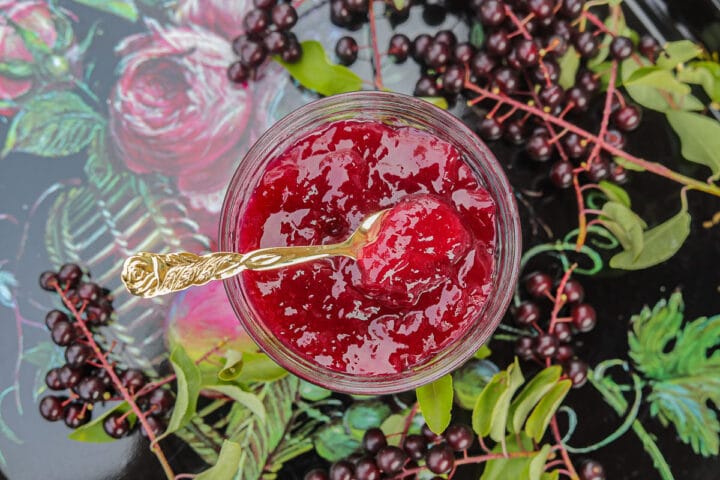
Chokecherries are currently in season. However, chokecherries are not the same thing as cherries. You won't find chokecherries at your local grocery store, so don't go looking for them there!
I've been known to pick them along windy backwoods Montana roads, with friends driving by and honking and strangers stopping to ask what I was picking and why. Yup, no shame at all, you have to get these tasty berries where you can find them!
If picked too early, the fruit has a very astringent taste that will make you "choke" or at least pucker. The berries go from green to red, to black, which is when you know that they're fair game. I use them in all kinds of recipe, I even make chokecherry wine!

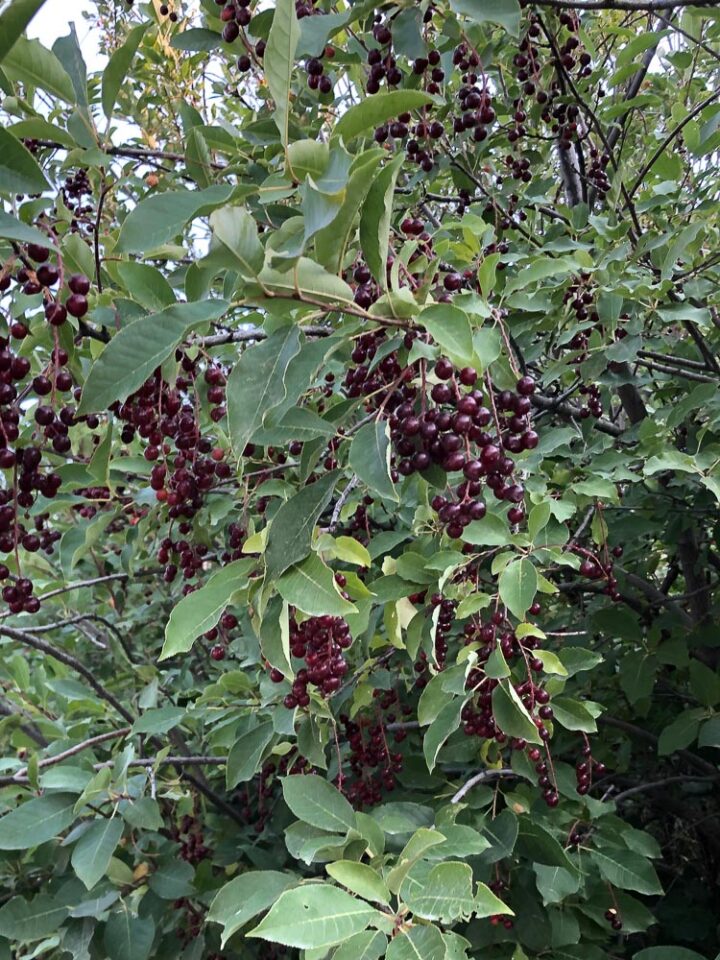
I have heard it said that you should not pick chokecherries until after the first frost. However, when you're competing with other people, birds, goats, and BEARS, sometimes you gotta get'em while you can!
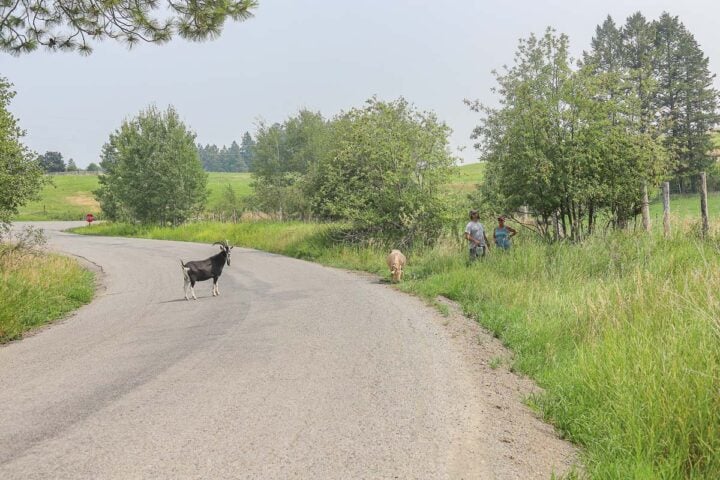

Jump to:
😍 Why You'll Love This Recipe
- This chokecherry jelly recipe is a tried and tested. I didn't only make this once, but four times just to get the texture and taste perfect.
- The precise measurements and the use of pectin will ensure that the chokecherry jelly will set every time you prepare it.
- Not only will you love this chokecherry jelly, but so will the recipients of your delicious gift. You are going to share, aren't you?
🔖 Ingredients & Substitutions
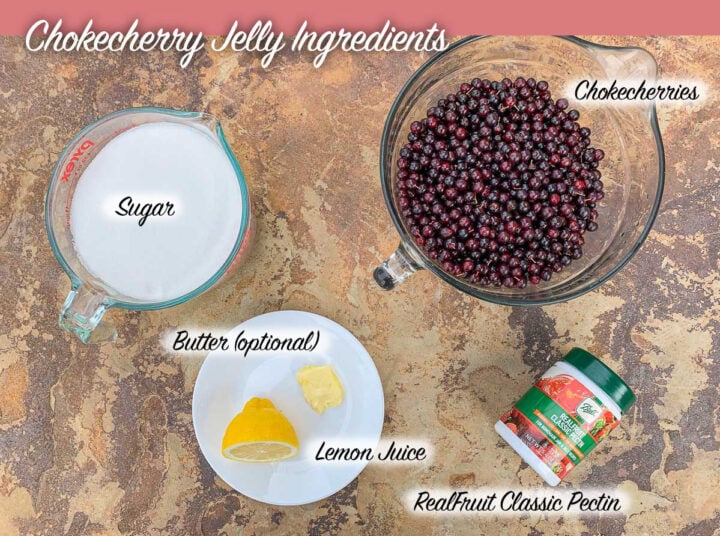
- Chokecherries: As mentioned earlier, this wild fruit needs to be foraged and is usually ripe in August (at least in Montana). Choose the berries that are dark in color or almost black.
- Pectin: I've tried a few different types of pectin for this recipe, including liquid pectin. The one that gave me the best results was RealFruit Classic Pectin.
- Lemon Juice: I like to add a little lemon juice for the acidity. I recommend using fresh lemon juice when possible, but you can substitute bottled if you need to.
- Butter: A teaspoon of butter can cut down on the amount of foam that is produced as the chokecherry jelly boils. If you don't add the butter, you may need to skim the foam off the jelly before you can it.
- Vanilla Extract — In the past, I have used vanilla extract in my chokecherry recipes. This is mainly because I'm not a big fan of almond extract, which seems to be recommended in many recipes. Feel free to add vanilla extract, almond extract, or leave them out, like I did.
🫙 Helpful Tools
- 6 half-pint canning jars
- 8-quart pot
- Strainer
- Canner & canning tools
🍒 How to Make Chokecherry Jelly
Step 1: Wash jars, then place jars in a water bath canner. Boil for 10 minutes. Keep the jars in the hot water until needed. The lids and bands can be added a few minutes before you need them.
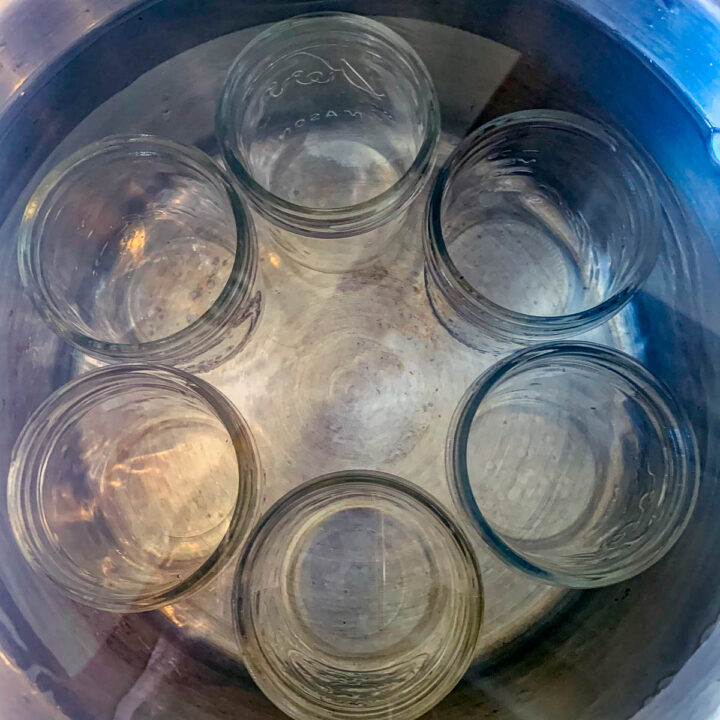
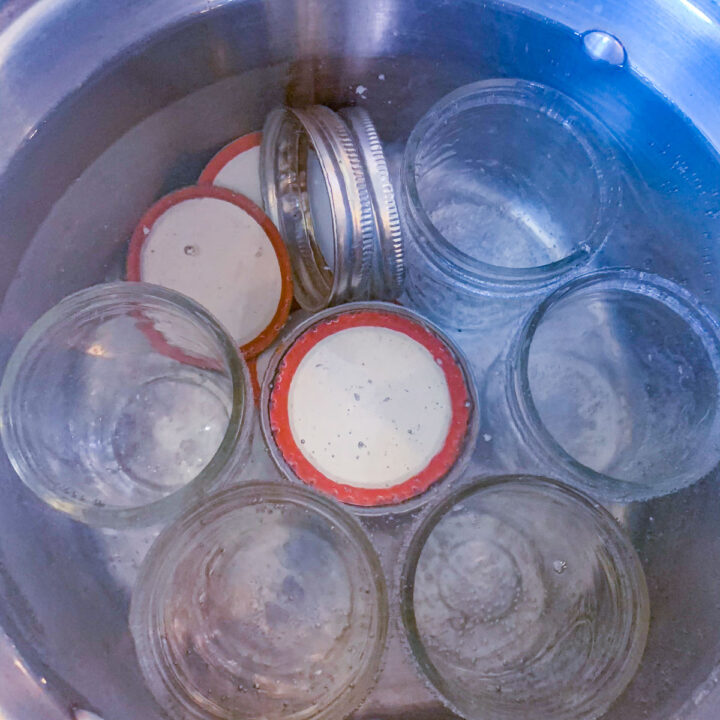
Step 2: Add cleaned chokecherries to a large saucepan. Cover with six cups of water. Bring to a boil over medium-high heat, then simmer, uncovered, over low heat, for 30 minutes.
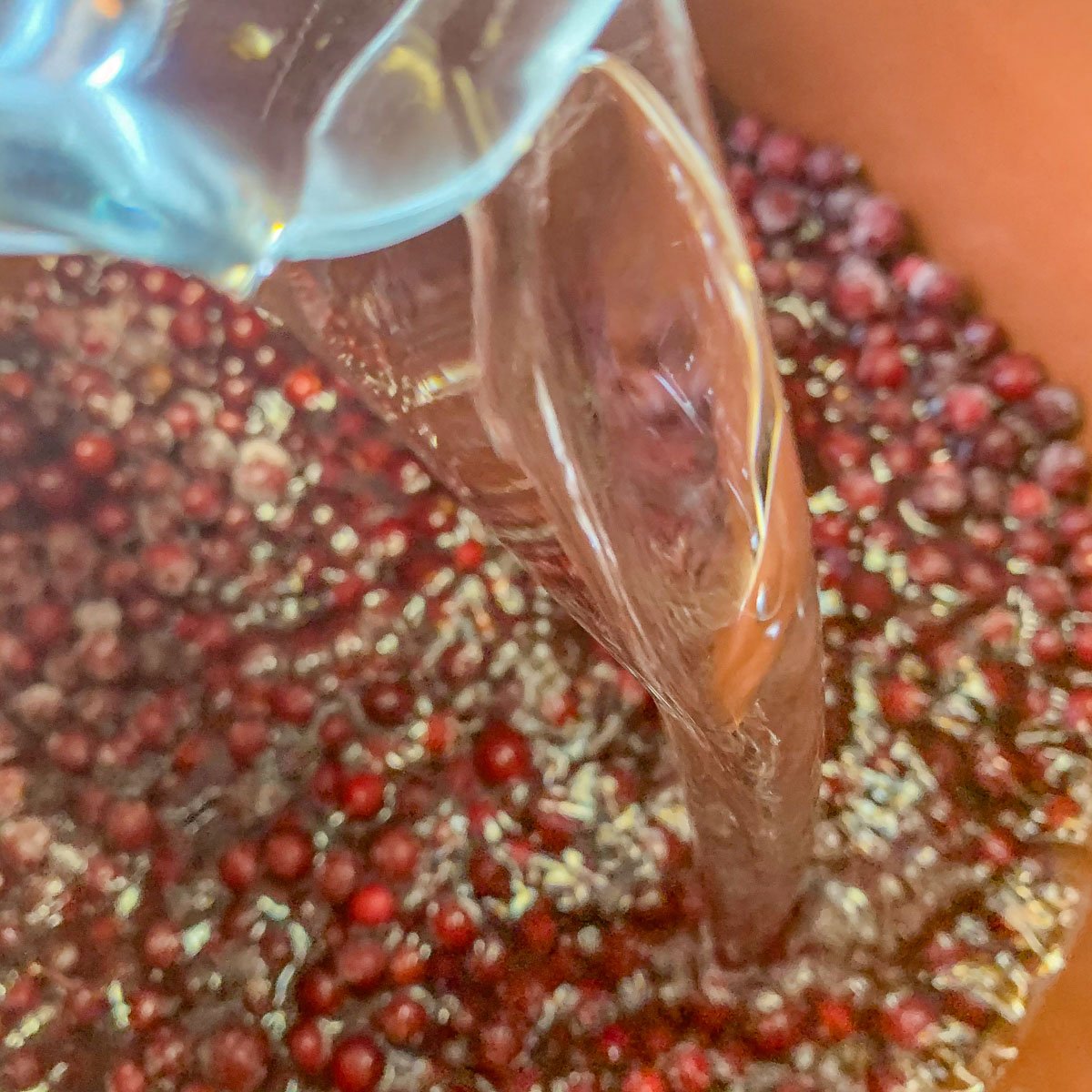
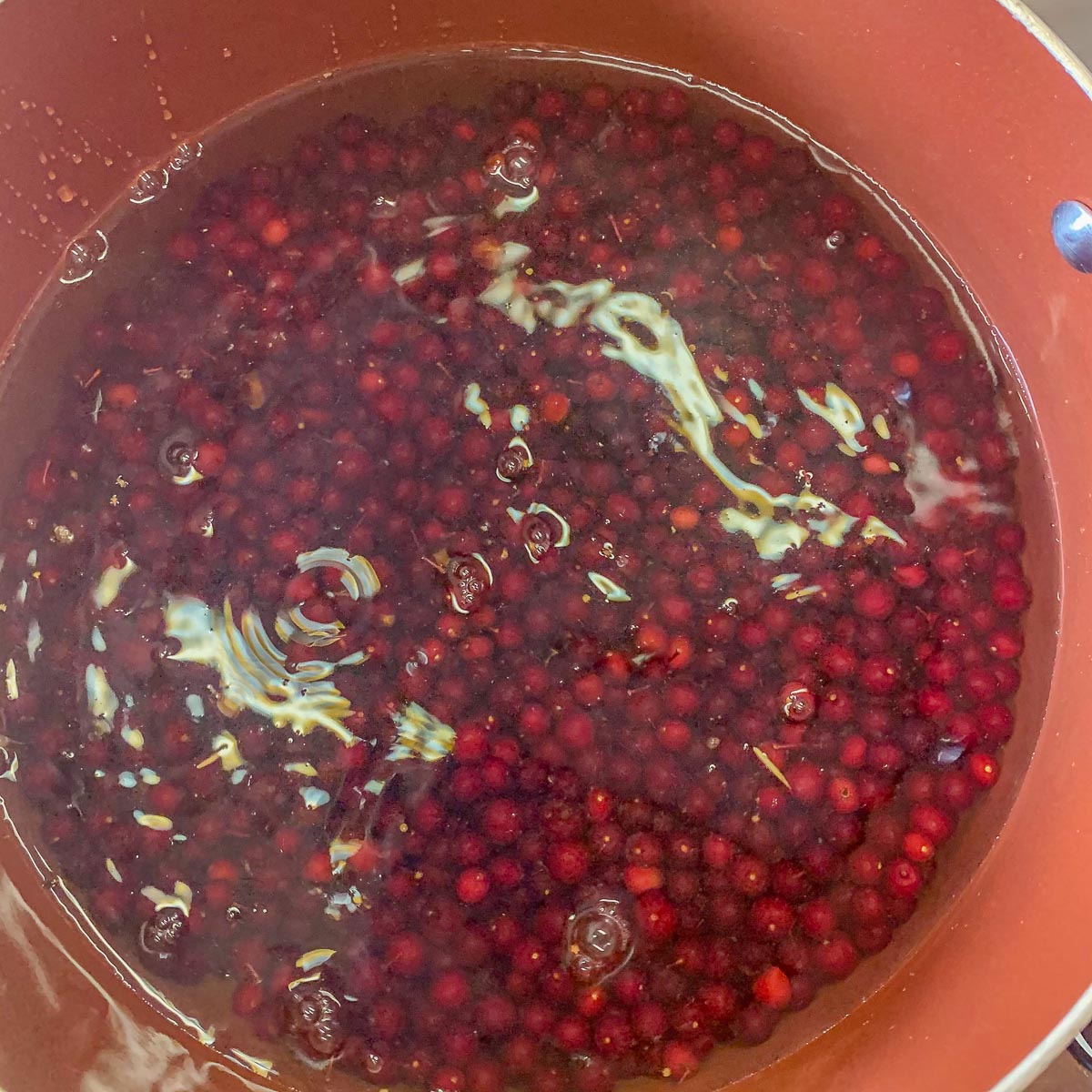
Step 3: Smash the fruit to release the juice and strain the liquid through a fine strainer, jelly bag, or double layers of cheesecloth. You should have approximately 3½ cups of chokecherry juice. If not, add enough water to equal 3½ cups.
Would you like to save this recipe?
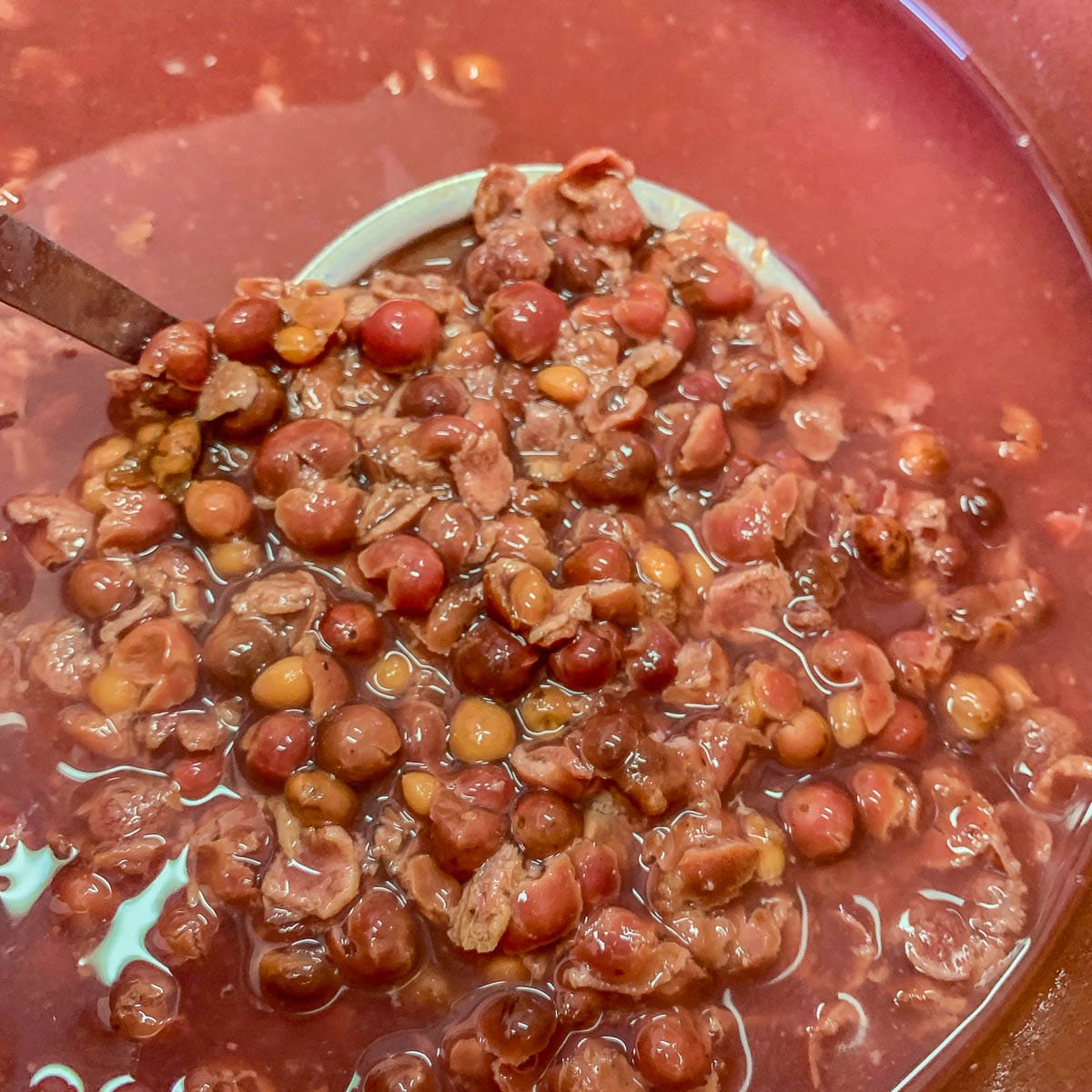
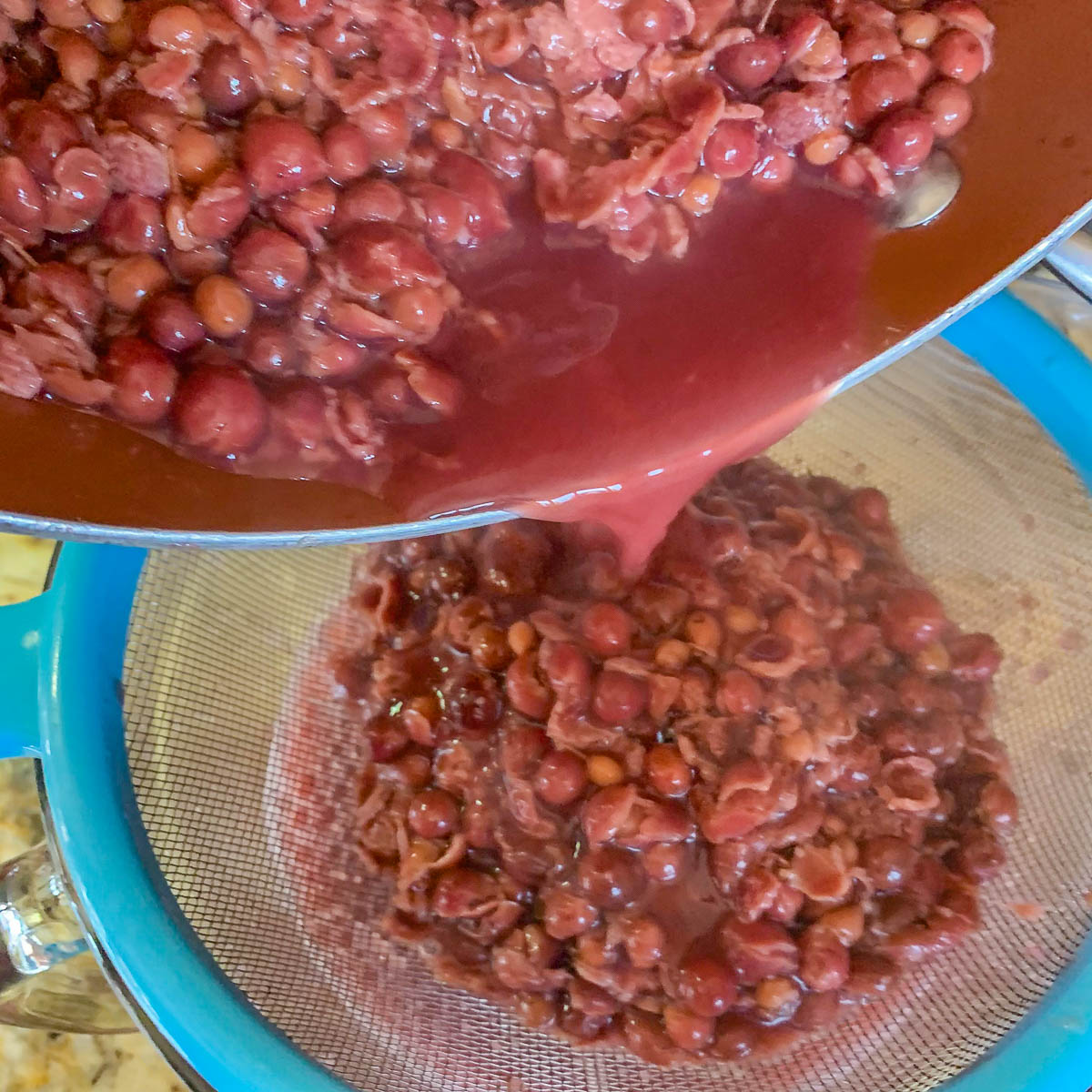
Pro Tip: To make chokecherry jam, add some of the pulp to the juice so that you end up with a more jam-like texture.
Step 4: Clean the saucepan and return it to the stove. Pour strained juice back into the pot. Turn the heat to medium. Whisk in RealFruit Classic Pectin until dissolved. Add lemon juice and butter (if using). Bring the mixture to a full rolling boil, over high heat, whisking constantly for 2 minutes.

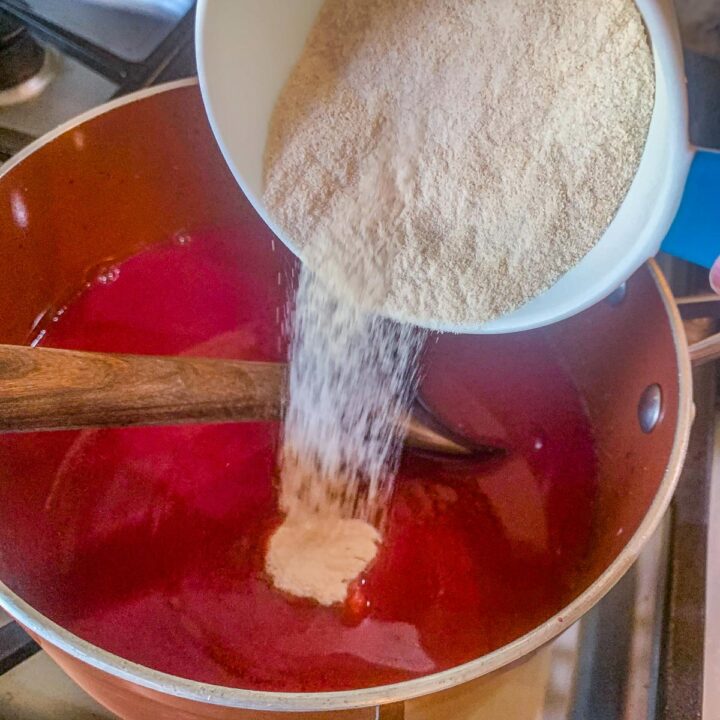
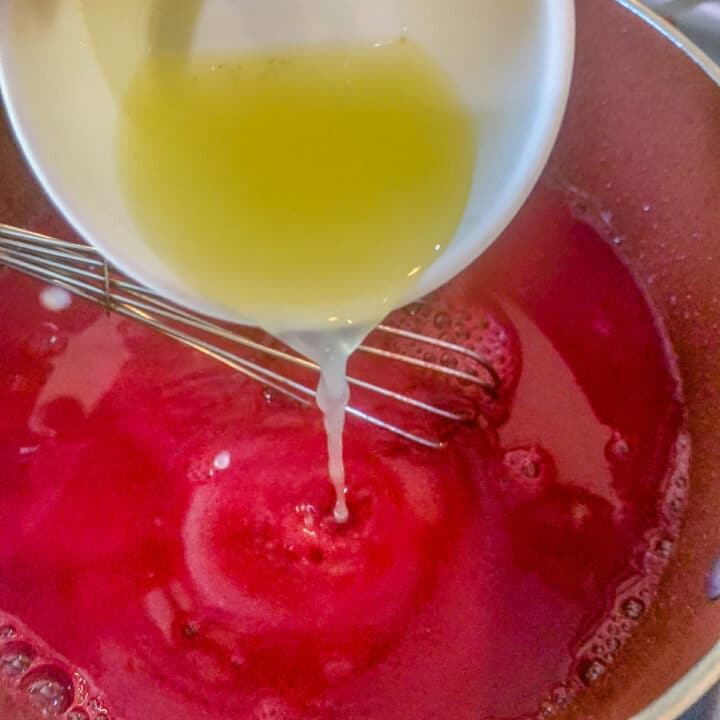
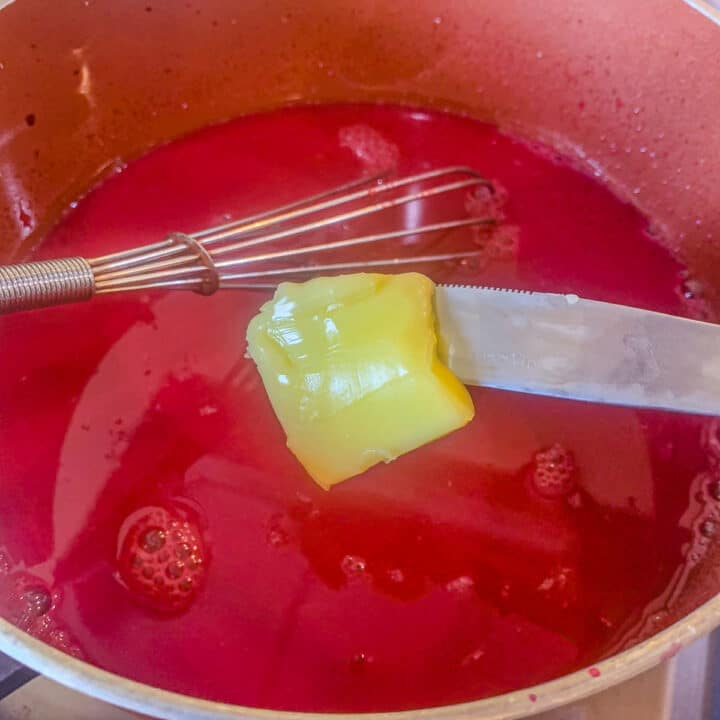
Step 5: Next, add 4 cups of sugar, while you continue to whisk to dissolve it. Return the mixture to a full rolling boil and boil hard for one additional minute. Skim off the foam, if necessary.
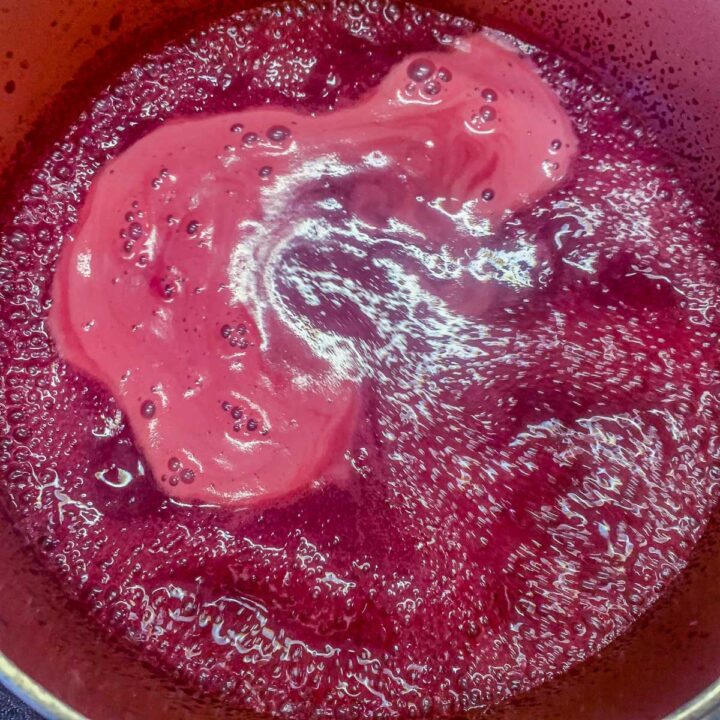
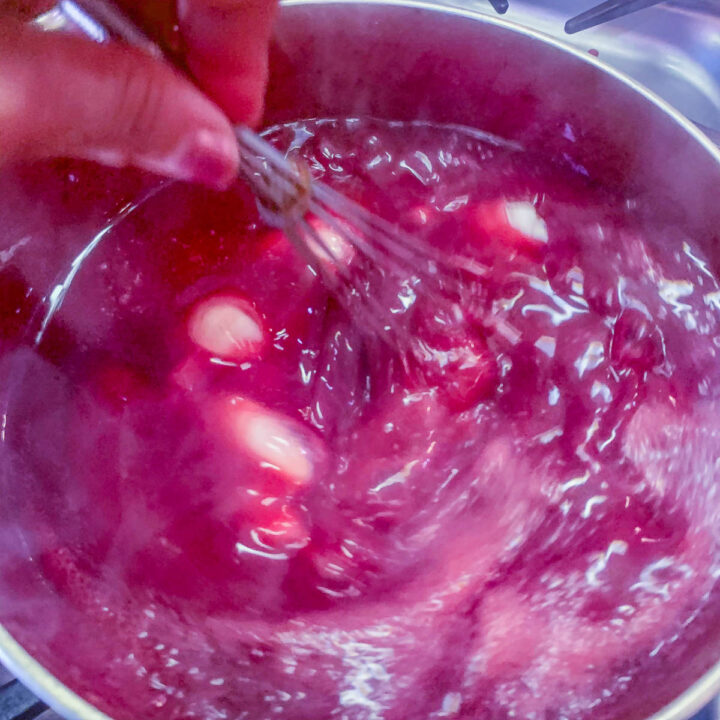
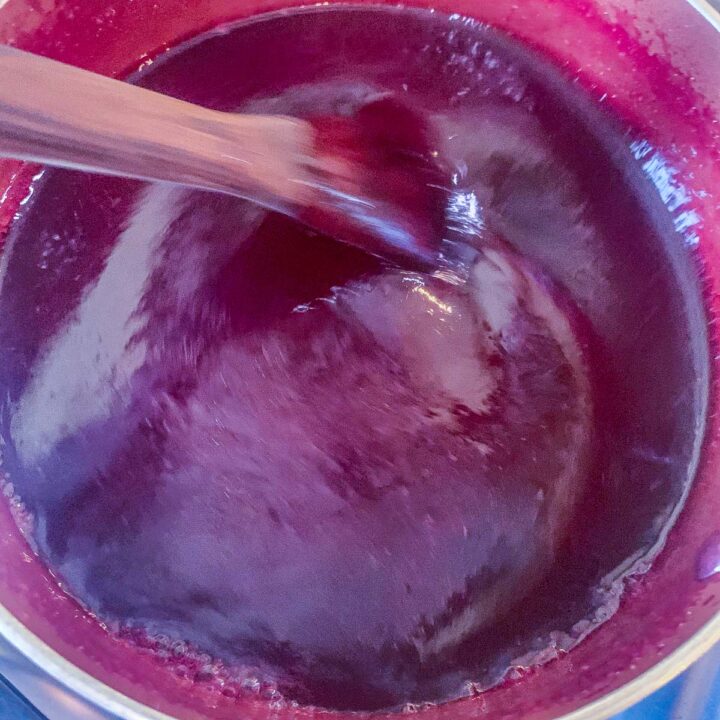
Step 6: Ladle jelly into sterilized jars, leaving ½ inch headspace. Wipe the glass jar rims with a damp kitchen towel, secure lids, and screw bands hand-tight.
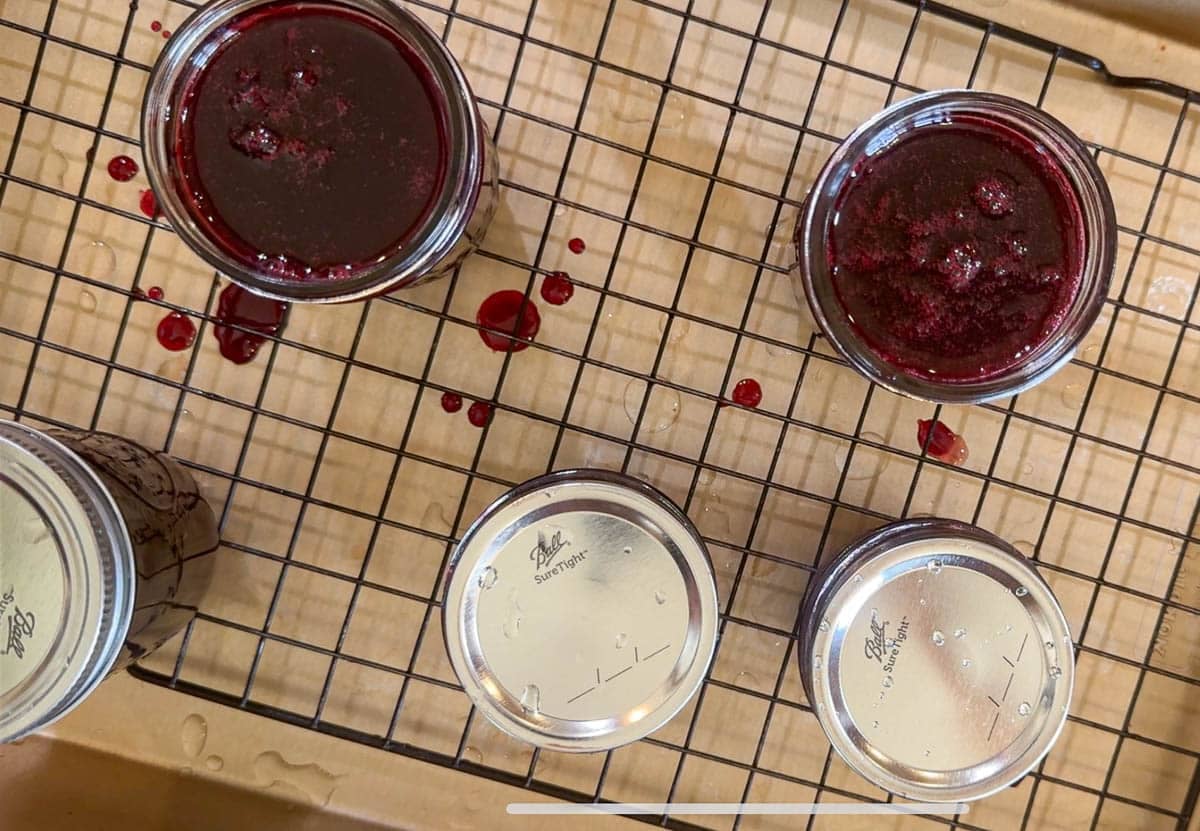
🫙 Water Bath Canning Instructions
Add jars to the canner filled with water and make sure the water level is at least a few inches over the jars. Process the filled jars in boiling water based on the times in the chart below:
| Altitude | Gel Point |
|---|---|
| 1000'-3000' | 5 minutes |
| 3001'-6000' | 10 minutes |
| 6001'-8000' | 15 minutes |
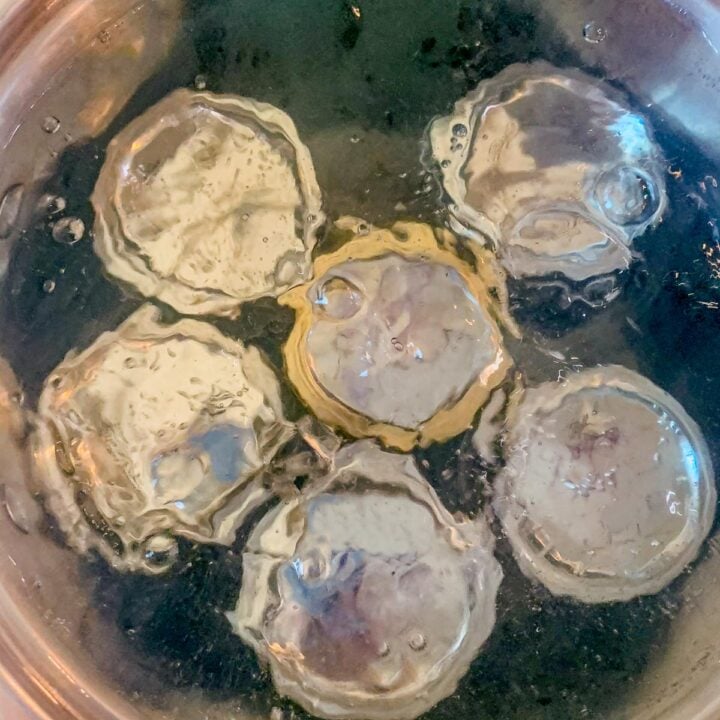
Pro Tip: Remove jars from the canner and place on the counter to seal. Make sure that the jars have sealed properly, then store in the pantry for up to a year. If a jar has not been sealed you can either process it again or store it in the refrigerator to be consumed first.
🤷🏻♀️ Recipe FAQs
Chokecherries should be picked in late summer. According to nrcs.usda.gov, they are found in all but eight states here in the U.S.
In Montana, chokecherries begin ripening in August. It is generally recommended to wait until after the first frost, which is said to make the fruit sweeter and less astringent.
Chokecherries might not be the best-tasting fruit when picked off the plant, but there are many ways that the fruit can be enjoyed. Here are a few examples.
• Chokecherry jam, syrup, or sauce
• Chokecherry liqueur, mead, or chokecherry wine
• Chokecherry pie
After washing the chokecherries, add them to a large pot and cover them with an equal amount of water. Simmer the chokecherries for 30 minutes or longer. Once the fruit begins to burst, smash the berries using a potato masher. Keep in mind that if you simmer the fruit longer, more of the juice will evaporate, yielding less juice.
Strain the liquid through a sieve or jelly strainer. If you prefer a clearer liquid, don't press down on the chokecherries in an attempt to get more juice out of the berries. This can cause your juice to be cloudy.
Another great way to juice chokecherries is with a steam juicer.
The fleshy part of the choke cherry fruit is edible, while the seeds, twigs, and leaves of the plant are considered poisonous. But then again, why would you want to eat the twigs, leaves, and seeds?
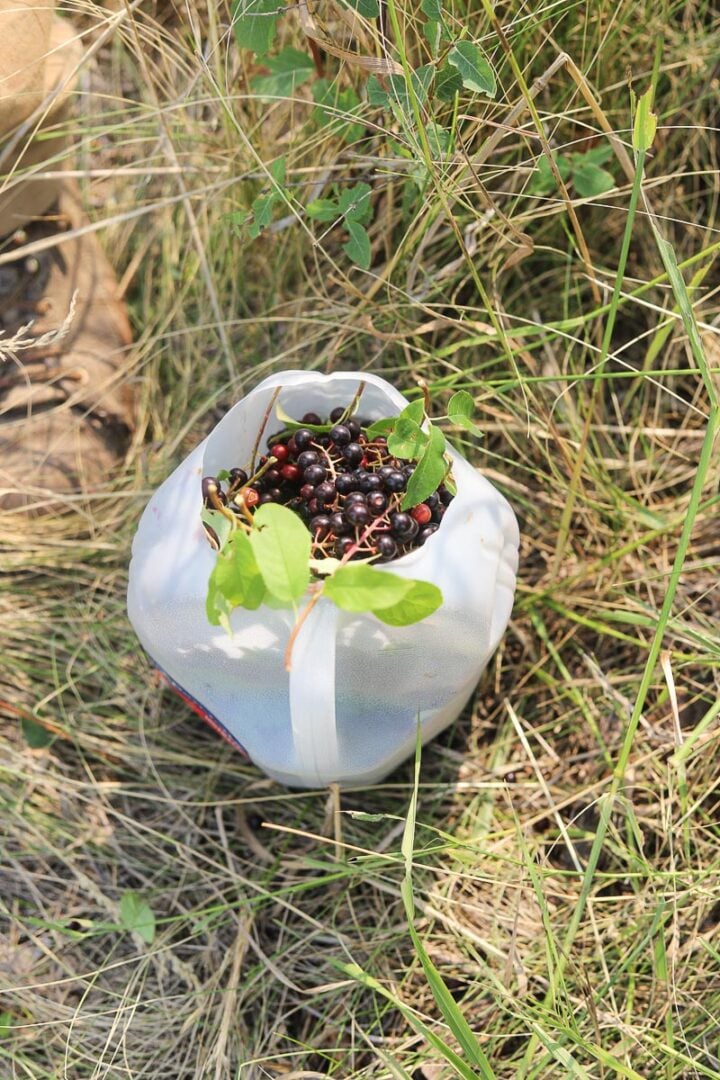
👩🏼🍳 Pro Tips
- It is generally recommended to let the juice drip into a bowl, undisturbed, for a few hours instead of squeezing or pressing on the fruit. This may cause the chokecherry jam or jelly to be cloudy. This is totally up to you and how much patience you have!
- Unripe chokecherries are red and are higher in natural pectin. This means they may help your jam jell better. Having a small percentage of unripe chokecherries as part of your recipe may not be a horrible idea.
- Chokecherries can be frozen until you are ready to use them. After washing the chokecherries and removing the earwigs, spiders, and other debris, measure and portion them into freezer bags. Freeze until needed.

🍇 More Jam and Jelly Recipes
If you love this chokecherry jelly recipe, try these other related recipes!
📖 Recipe
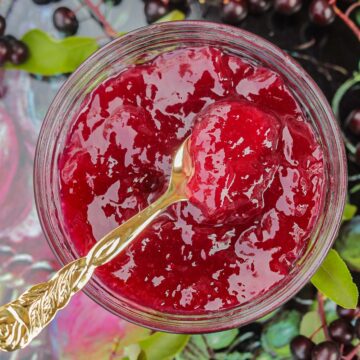
Backwoods Chokecherry Jelly
Equipment
- 1 strainer
Ingredients
- 6 cups chokecherries
- 6 cups water
- 4½ tablespoon RealFruit Classic Pectin
- 2 tablespoon fresh lemon juice
- 1 teaspoon butter (optional)
- 4 cups sugar
Instructions
- Wash jars, then place jars in a water bath canner. Boil for 10 minutes. Keep the jars in the hot water until needed. The lids and bands can be added a few minutes before you need them.
- Add cleaned chokecherries to a large saucepan. Cover with six cups of water. Bring to a boil over medium-high heat, then simmer, uncovered, over low heat, for 30 minutes.
- Smash the fruit to release the juice and strain the liquid through a fine strainer, jelly bag, or a few layers of cheesecloth. You should have approximately 3½ cups of chokecherry juice. If not, add enough water to equal 3½ cups.
- Clean the saucepan and return it to the stove. Pour strained juice back into the pot. Turn the heat to medium. Whisk in RealFruit Classic Pectin until dissolved. Add lemon juice, and butter (if using). Bring the mixture to a full rolling boil, over high heat, whisking constantly for 2 minutes.
- Next, add 4 cups of sugar, while you continue to whisk to dissolve it. Return the mixture to a full rolling boil and boil hard for one additional minute. Skim off the foam, if necessary.
- Ladle jelly into sterilized jars, leaving ½ inch headspace. Wipe the glass jar rims with a damp kitchen towel, secure lids, and screw bands hand-tight.
Canning Instructions
- Add jars to the canner filled with water and make sure the water level is at least a few inches over the jars. Process the filled jars in boiling water based on the times in the chart found in this post.
Notes
- It is generally recommended to let the juice drip into a bowl, undisturbed, for a few hours instead of squeezing or pressing on the fruit. This may cause the jelly to be cloudy. This is totally up to you and how much patience you have!
- Unripe chokecherries are red and are higher in pectin. This means they may help your jam jell better. Having a small percentage of unripe chokecherries as part of your recipe may not be a horrible idea.
- Chokecherries can be frozen until you are ready to use them. After washing the chokecherries and removing the earwigs, spiders, and other debris, measure and portion them into freezer bags. Freeze until needed.

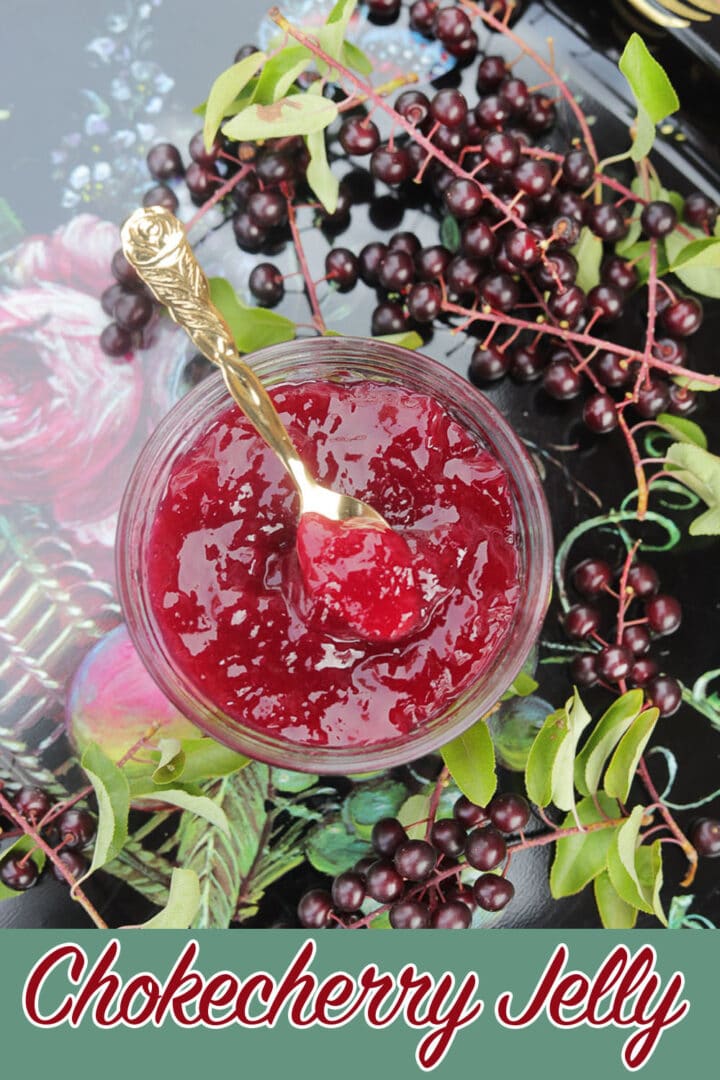
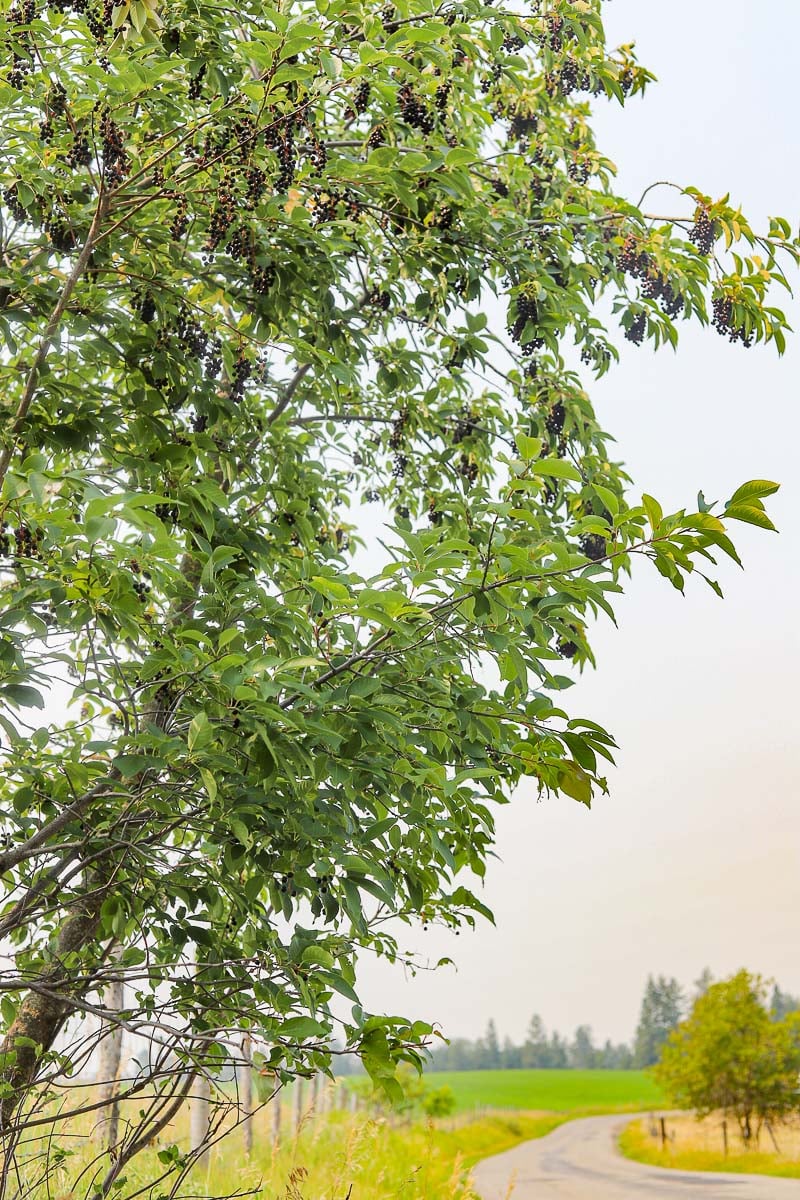
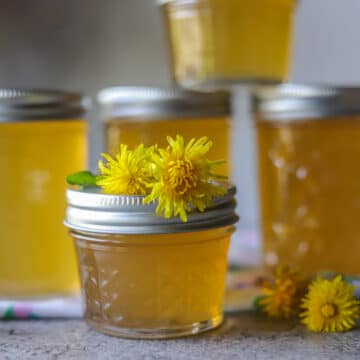
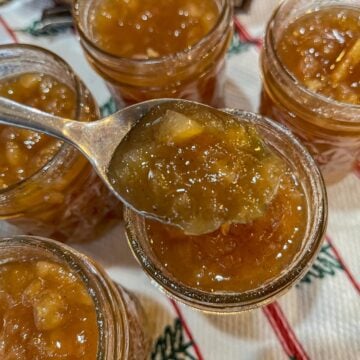
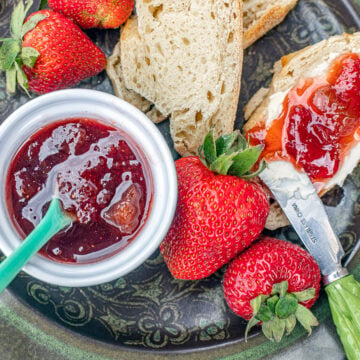
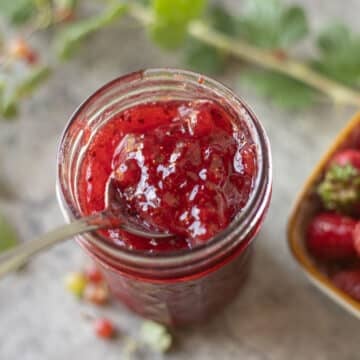
Tracy Watt says
Our jelly set up overnight and it is absolutely delicious and perfect! Thank you so much for the recipe.
We are still curious as to how much juice our first cook produced (per my first post).
Thanks again, Tracy
Hilda Sterner says
Thank you for the update! My theory is because you made a larger batch and had more liquid, not as much evaporated or cooked off? Either way, glad it worked out for you!
Tracy Watt says
Our first batch of jelly is setting up tonight. However, we didn’t understand how 6 cups of chokecherries plus 6 cups of water could yield only 3-1/2 cups of juice. Did we miss something? We cooked equal amounts of chokecherries and water (16 cups of each) and ended up with 16 cups of juice?!?!
Hilda Sterner says
Hi Tracy, I made some chokecherry jelly last week using this recipe and the recipe is accurate. Because the mixture is simmered for 30 minutes, uncovered, a lot of the liquid evaporates.That's how you end up with less liquid. I hope that answers your question.
Pat Brown says
I just did the simmer for 30 min and am straining but have more then 3 cups of liquid should I discard or boil it down? Also should it be cloudy will it clear at next stage?
Hilda Sterner says
Hi Pat, you can either discard or boil it down, it's really up to you but you need 3 1/2 cups of juice. It will be cloudy but will clear up when you add the lemon juice and pectin.
Pat says
Thanks will let you know how it turns out!
Bonnie Billadeau says
Love the very detailed recipe!
Hilda Sterner says
Thank you, Bonnie! Just picked a whole bunch today and have a batch of chokecherry fruit leather in the oven... recipe coming soon!
Raven says
Have you successfully doubled this recipe? Chokecherries are ripe now! YAY!!!
Hilda Sterner says
I don't think I have doubled the recipe, but I don't see why it wouldn't work!
Raven says
I just saw that! THANK YOU! Only took me two days to see it! :))))
Hilda Sterner says
Haha, no worries!
Raven says
Hi! It does not say in the recipe what quantity of chokecherries to use with the six cups of water. Help! :)))
Hilda Sterner says
Hi Raven, The exact ingredients are in the recipe card!
rebecca says
I'm so excited to make this. You've explained it all so well (I'm new to water bath canning and have been intimidated to try). My question is whether I can double the recipe. I have TONS of chokecherries from the fall. Or should I do this single recipe twice?
Hilda Sterner says
Hi Rebecca, I always recommend doing a single batch first, just to make sure you don't need to make any adjustments. Good luck!
rebecca clarke says
Thanks so much for your response! I don’t know anyone who does canning so I have one more question. Can you sterilize your jars I. The same water/pot you do the canning in? Sorry if that’s a stupid question I just cannot find anything on the internet that says yes or no!
Hilda Sterner says
Hi Rebecca, that's not a dumb question if you've never canned before. Sometimes I forget that not everything is obvious! So yes, start by placing the jars in cold water and bring to a boil. Ten minutes should be enough.When you're ready to fill the hot jars with the jam or jelly, pull the jars out of the water, then fill leaving about 1/4" space at the top. Then wipe the rims. Add the lids and bands in the hot water for like 30 seconds or so then remove and tighten on the jars (but not too tight so the air bubbles can escape). Put the jas carefully back into the same pot and bring to a boil. Once the water is boiling, set a timer for 10 minutes, longer if you're at a higher elevation. When you pull the jars out of the water wait for them to seal (you should hear a pop as they seal). If any don't seal you can store them in the fridge. I hope that helps!
Kelly Methey says
This is not only delicious but has a very beautiful color. Your picture should have everyone’s mouths watering! Another very interesting and delectable recipe, Hilda!
Hilda Sterner says
❤️❤️❤️
Teresa Evers says
Hilda’s Chokecherry jelly is amazing. I was lucky enough to try her new recipe. Being a local Montana resident, there are an abundance of Chokecherries around me. Her recipe is simple, it doesn’t require many ingredients. The jelly has a unique flavor, not to sweet, just right. I love it on sourdough toast with butter in the morning. This is definitely a five star rating.
Hilda Sterner says
Thank you, Teresa! So glad you're enjoying it. My favorite way to eat it is over toasted sourdough too... but with cream cheese, yum!
nancy leavitt says
Sounds perfect Hilda! Our chokecherries are almost ripe here in New Brunswick, Canada
Hilda Sterner says
Yes! It's a great crop here in Montana this year! Good luck!